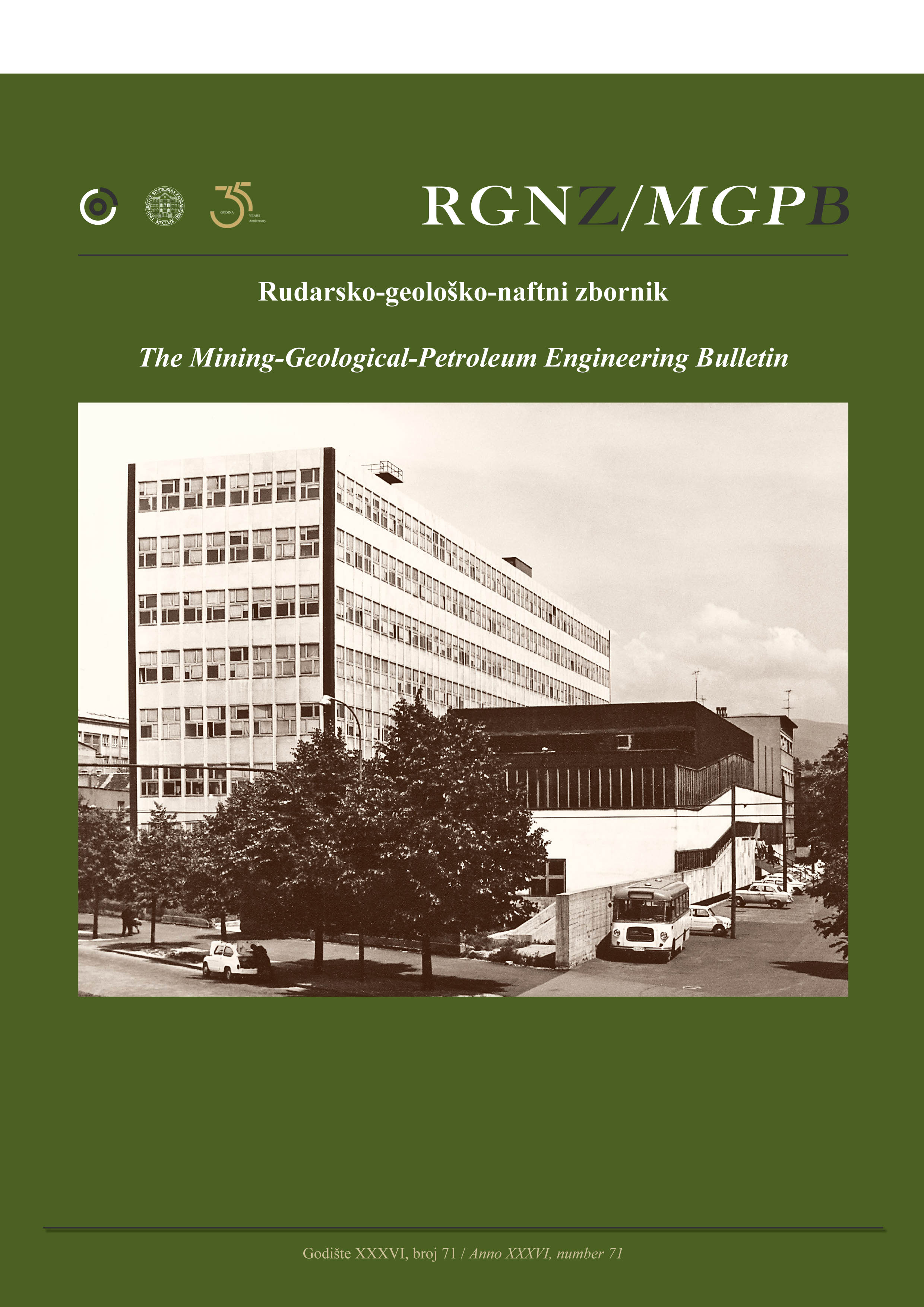An Update to the Geology of Sebuku Island, South Kalimantan, Indonesia: Constraints From Petrological Studies
DOI:
https://doi.org/10.17794/rgn.2024.5.9Keywords:
Sebuku island, ultramafic, pyroclastic, microgabbroAbstract
Sebuku Island is located at the southeastern tip of Kalimantan Island and has geological similarities with the Bobaris-Meratus complex in distribution pattern and stratigraphic sequence. The pattern of straightness of geological structures between the two, both folds and faults, is generally directed from northeast-southwest to northwest-southeast. The previous geological research on Sebuku Island focused on the distribution of ultramafic rocks, which are speculated to contain iron, particularly from laterite soils. This research aims to determine the rock units in the study area to update the geological map of Sebuku Island, especially in the Sei Pinang and Halaban areas.
The research method consists of fieldwork, laboratory analyses, and data analyses. The geological fieldwork collected 34 samples from detailed mapping on outcrops, trenching, and drilling. Geological structure observations were carried out on fresh outcrops and measured 57 structural geological elements from 6 locations. Petrographic analysis of 34 samples was carried out with the aim of determining rock type and mineralogical composition. Stereographic analysis of geological structure measurement data was used to define the general direction and type of geological structures in the investigated outcrops. The geological map is constructed on the basic topographic map in the scale 1:50,000 using MapInfo Pro v17.0.5.
Based on petrographic observations and detailed field observations, especially in North Damar, from surface outcrops and drill core observations from Madang, the following results are revealed. In the geology of North Damar, in particular, and Sebuku Island, in general, the lithology can be described as an ultramafic rock unit (lherzolite, harzburgite, and dunite), pyroclastic rock unit (crystallo-lithoclastic tuff and crystalloclastic tuff), limestone unit, dike rock unit (microgabbro and diorite), sandstone unit, and alluvial deposit.
Almost 60% of Sebuku Island outcrops belong to the ultramafic rock units, which are tectonically covered by crystalline lithic tuff and crystalline tuff and volcaniclastic rock units with interbedded limestone, unconformably covered by sandstone units, alluvial deposits, and swamp deposits. Microgabbro and diorite were observed from the drill core and were not exposed to the surface. Hydrothermal mineralization is indicated by quartz veins cross-cutting the pyroclastic rock group observed in drill cores. This research shows a more detailed geological description of the study area compared to previous research and regional geological map.
Downloads
Published
How to Cite
Issue
Section
License
Copyright (c) 2024 Wahyu Widodo, Haryadi Permana, Ernowo, Swamidharma, Inu Pinahalan , Andhy Cahyadi, Yudhi Krisnanto

This work is licensed under a Creative Commons Attribution 4.0 International License.
Creative Commons-BY
Authors who publish with this journal agree to the following terms:
In agreeing this form, you certify that:
- You read the ethical codex of the RGN zbornik available at journal web.
- You submitted work is your original work, and has not previously been published and does not include any form of plagiarism.
- You own copyright in the submitted work, and are therefore permitted to assign the licence to publish to RGN zbornik.
- Your submitted work contains no violation of any existing copyright or other third party right or any material of an obscene, libellous or otherwise unlawful nature.
- You have obtained permission for and acknowledged the source of any illustrations, diagrams or other material included in the work of which you are not the copyright owner.
- You have taken due care to ensure the accuracy of the work, and that, to the best of your knowledge, there are no false statements made within it.
- All co-authors of this submitted work are aware of, and in agreement with, the terms of this licence and that the submitted manuscript has been approved by these authors.
Publication licence
You retain copyright in your submitted work, according to journal license policy (CC-BY). By signing this form you agree that RGN zbornik may publish it under the publication licence. In summary the licence allows the following:
Anyone is free:
- To copy, distribute, display, and perform the work.
- To make derivative works.
Under the following conditions:
- The original author must always be given credit.
- The work may not be used for commercial purposes.
- If the work is altered, transformed, or built upon, the resulting work may only be distributed under a licence identical to this one.
Exceptions to the licence
In addition to publishing the work printed under the above licence, RGN zbornik will also enable the work to be visible online.
The journal editorial can change the licence rules anytime but it cannot retroactively restrict author(s) rights.


